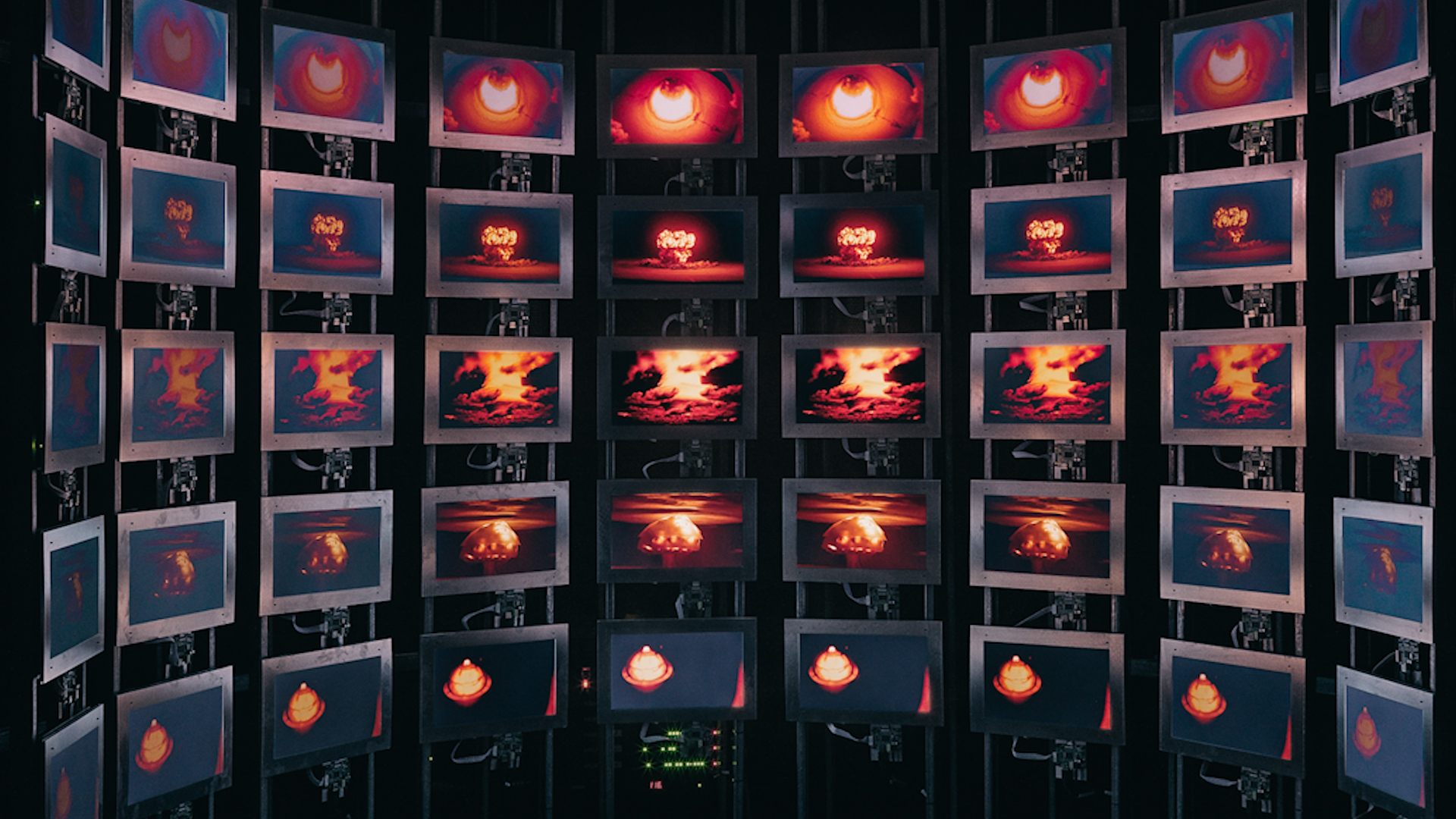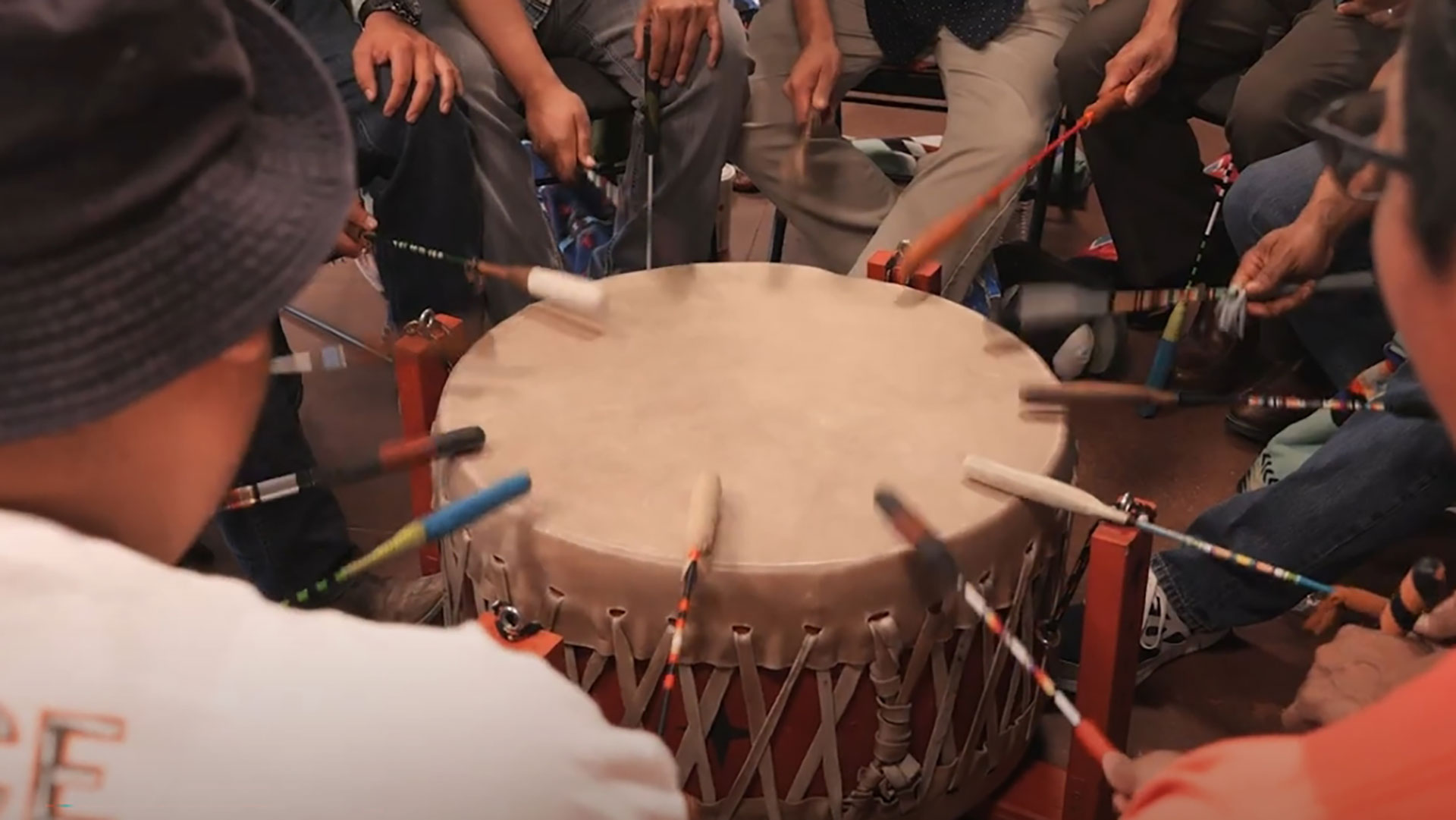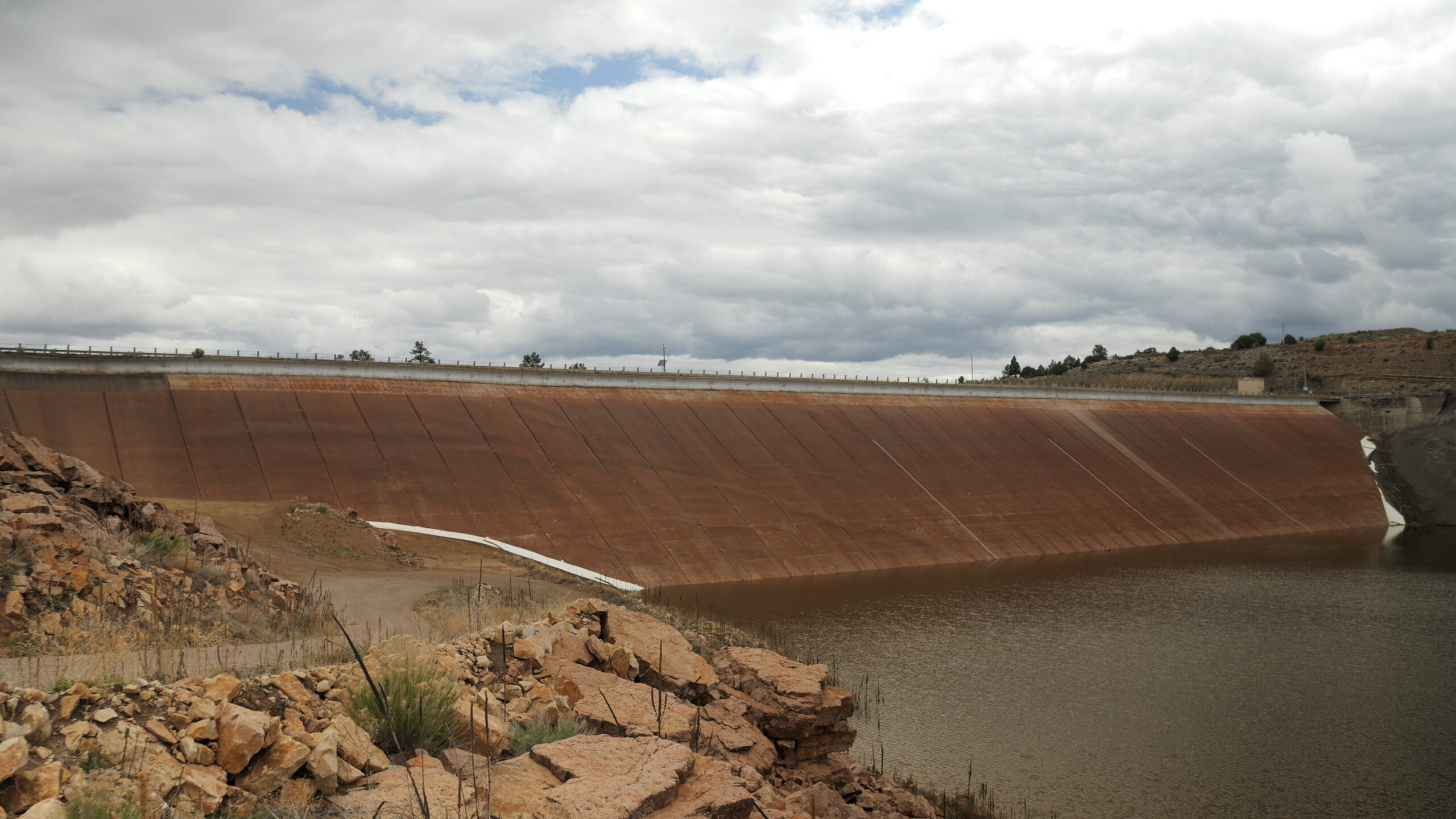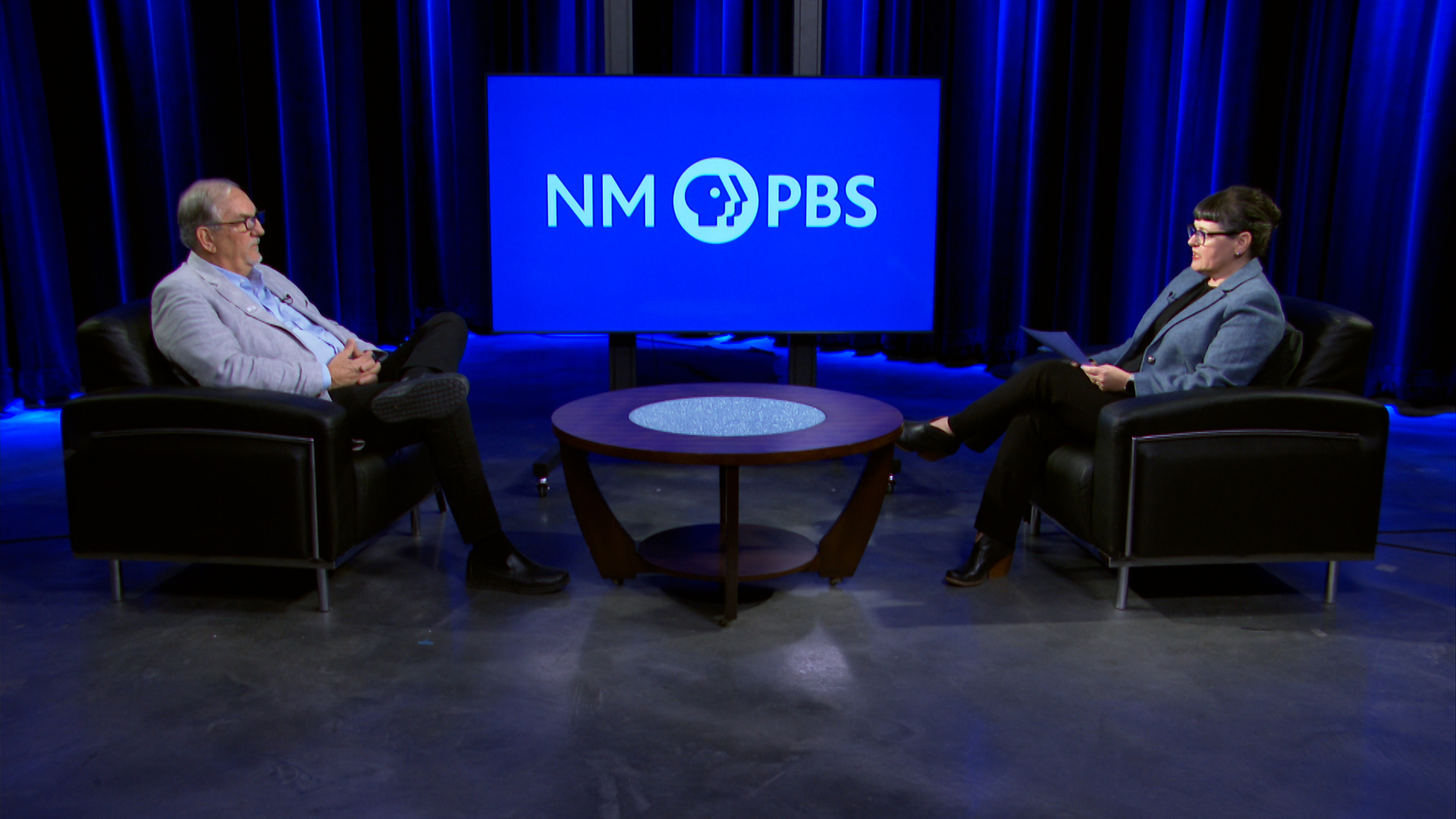Powwow Class Gives Urban Native Families Space to Celebrate Culture
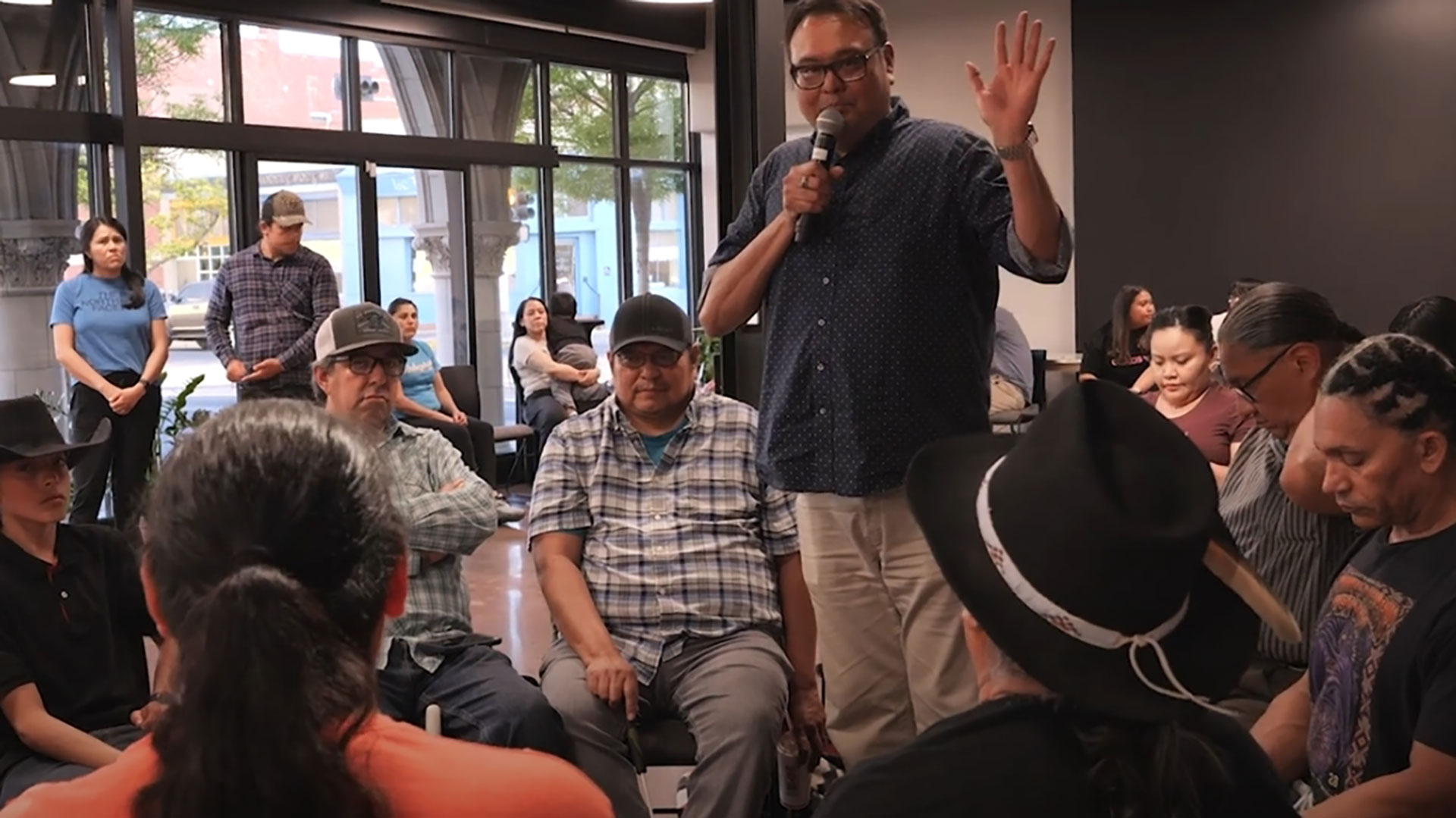
Niko DeRoin-Silva has been in the powwow arena since she could walk. She was too young to remember that time, but relatives of hers speak about it fondly. Growing up in Northern California, away from her tribal community, dancing helped her feel connected.
“Sometimes we call it a coming out ceremony, where we give someone the right to dance, and the person sponsoring the dancer will show them around the arena, teach them about their regalia,” DeRoin-Silva (Otoe-Missouria/Choctaw) said. “I know for my own tribe, we dress them in the arena as a witness. Everybody can see that they are loved, they are cared for, they are supported.”
Now, DeRoin-Silva is hosting free, weekly classes in downtown Albuquerque, where families practice dancing and share knowledge with each other, like how to make regalia to wear at powwows — gatherings hosted by many, but not all, Indigenous communities in the U.S. and Canada that feature dancing, singing and drumming.
“When you’re urban, you’re disconnected, and we’re bombarded constantly with our job, school, having to study, of course, technology all the time,” DeRoin-Silva said. “And I wanted to provide a safe space where adults and youth could come and explore their culture in a positive way.”
At an April class, a couple dozen families, some with teenagers and others with toddlers, arrived at the Resilience Hub, run by local nonprofit New Mexico Community Capital. They grabbed food as they caught up, and later, took part in what’s called grand entry, where all dancers entered the circle to a song from drum group Shield Chief.
DeRoin-Silva also goes over etiquette during each class.
“If you are at a powwow and you get called up to receive a gift, it’s protocol to go around the arena,” she told attendees. “You’re going to come around the perimeter of the circle up to where you’re being asked to come up. And that might be if you’re head dancer and you’re receiving a gift, if you’re somebody being honored, or if you’re just somebody that wants to go up to the announcer stand to ask a question.”
Juanita Growing Thunder (Assiniboine/Sioux), who was at the class with her daughter Jessa Rae and her granddaughters, said she’s proud of DeRoin-Silva for giving young people a space “where they can come and learn these things, and they don’t have to be embarrassed.”
That’s been a dream of DeRoin-Silva’s for years, said Jessa Rae Growing Thunder (Assiniboine/Sioux), who hasn’t missed a class since they started earlier this year. She and DeRoin-Silva grew up together.
“I was tearing up tonight because I was telling her it’s really cool to see everybody get more and more comfortable being here,” she said, and that includes her two daughters. “This is a safe place, and not every place is safe for us to come as women and bring our kids and share space and learn from one another. And so Niko has done it.”
DeRoin-Silva, who moved to Albuquerque for college, taught her first formal powwow lessons in 2019 at the Native American Community Academy, where one of her daughters was a student.
“It was really cool to see people when they came to pick up their students,” DeRoin-Silva said. “You know, I had dads that said, ‘Hey, I have a drum. Do you mind if I bring it?’ And I’m like, ‘Yes, of course.’ … And another parent said, ‘Hey, I have these shawls that are just collecting dust. Maybe I could donate them to your class.’ I had another parent offer to sew parts of regalia. And so community just started to form from that one class, and it just snowballed.” That’s been her experience with this new class, too.
Shield Chief, the drum group, has shared songs at a couple recent classes, and they’ve answered questions from attendees, like at what age boys can start singing. Growing up with his family’s drum group, head singer Wil Gover (Pawnee/Tohono O’odham/Cherokee) said he took that kind of knowledge for granted.
“But for someone that doesn’t come from maybe that background, or doesn’t know the etiquette and the protocol, could be a little intimidating,” Gover said. “So definitely glad to come out and answering those questions and helping through the process and just show that it is open and it’s welcoming. You know, it shouldn’t be a scary thing to either try to learn to dance or sing.”
DeRoin-Silva sees the class as a form of resistance.
The roots of modern powwows can be traced back to the 1800s. They continued to grow as the Indian Relocation Act of 1956 brought more Native Americans to cities — part of a larger effort by the U.S. government to assimilate them and, ultimately, dispossess them of their lands. The Bureau of Indian Affairs touted the relocation program as an opportunity to escape poverty on reservations and find good housing and jobs in cities. In reality, tribal citizens who relocated were met with unemployment, discrimination and a loss of community support and cultural connection.
As that was happening, DeRoin-Silva noted, the American Indian Movement started up in 1968 as a response to injustices stemming from colonialism. “You have this uprise of these repressed Indigenous communities starting to say, ‘Hey, we’d like to reclaim that. And, yeah, let’s go forward and be community, and we’re in these urban areas, and let’s learn from each other.’ And so powwows sort of became the new community event, where everybody could come together,” DeRoin-Silva said. “And, you know, it was resistance. It was definitely resistance.”
– Bella Davis, Indigenous Affairs Reporter New Mexico In Depth
This story is part of a collaborative series from New Mexico PBS and New Mexico In Depth called Indigenously Positive. Bella Davis (Yurok) was the host/producer for this episode; NMPBS’ Joey Dunn (Diné) was the director/producer; NMPBS Multimedia Producer Benjamin C. Yazza (Diné) was a producer.
-
Powwow Class Gives Urban Native Families Space to Celebrate Culture
Niko DeRoin-Silva has been in the powwow arena since she could walk. She was too young to remember that time,…
-
‘the bomb’ Exhibit Shows the Horror of Nuclear Weapons
5.9.25 – A new exhibit called “the bomb” has opened at the University of New Mexico’s Zimmerman Library. The exhibit…
-
The Power of Powwows
5.9.25 – In collaboration with New Mexico In Depth, Indigenous Affairs Reporter Bella Davis visits a powwow dance class to…
-
Failing Water Architecture in NM
5.9.25 – The dam that creates the El Vado Reservoir on the Rio Chama Tributary is leaking — and in…
-
NMPBS General Manager on Proposed Federal Cuts to Public Media
5.9.25 – Correspondent Gwyneth Doland interviews NMPBS General Manager Franz Joachim, who lays out the facts on what President Trump’s…


